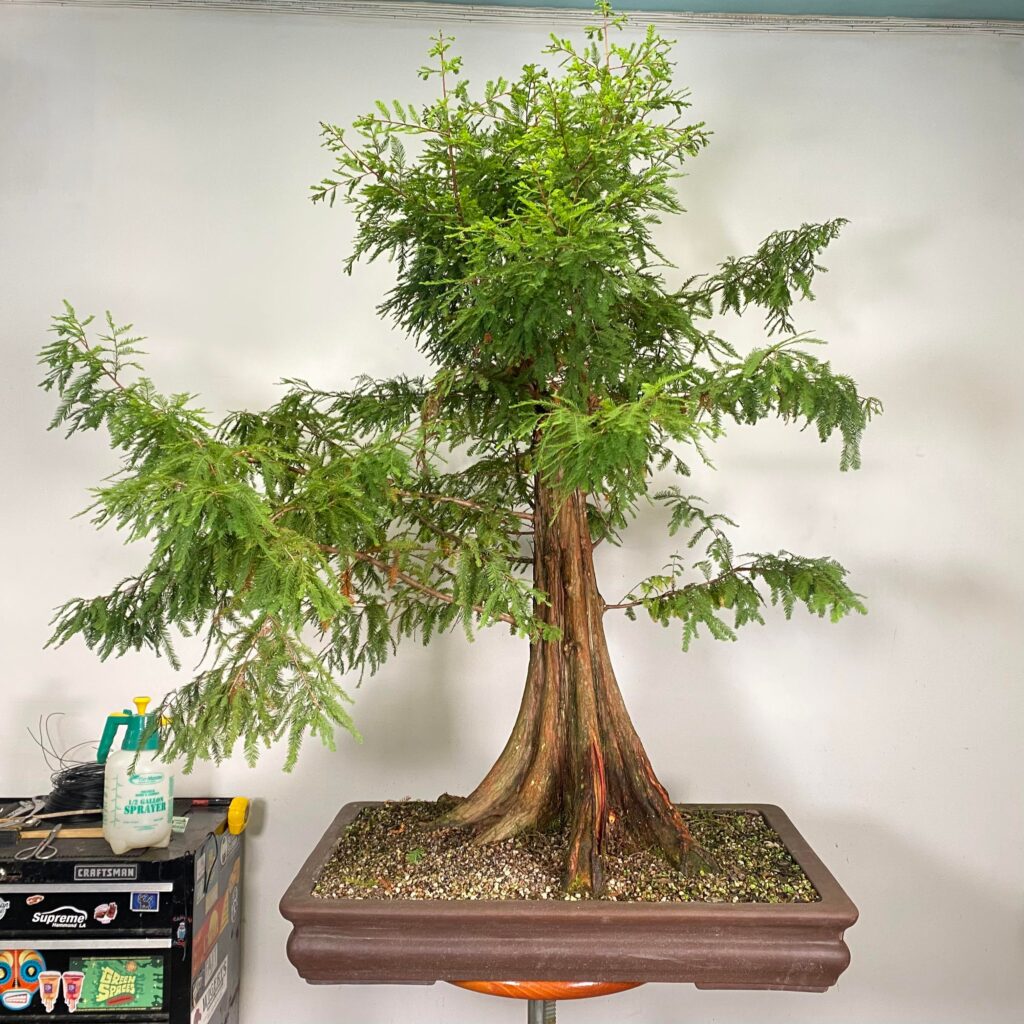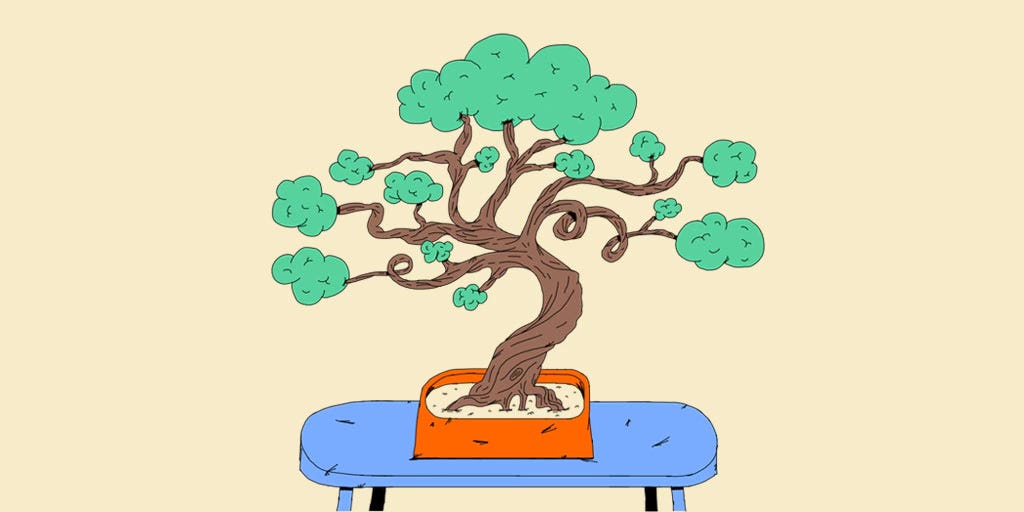Bonsai trees offer tranquility and enhance indoor aesthetics. They also promote patience and mindfulness through their care.
Bonsai trees have captivated plant enthusiasts for centuries. These miniature trees bring nature indoors, adding beauty to any space. They require careful maintenance, encouraging patience and mindfulness. Bonsai cultivation is a therapeutic hobby, providing stress relief and a sense of accomplishment.
These trees also improve air quality, making your environment healthier. With proper care, a bonsai tree can thrive for decades, becoming a cherished family heirloom. Their unique shapes and sizes make them a versatile addition to any decor. Whether you’re a seasoned gardener or a novice, bonsai trees offer a rewarding and enriching experience.

Credit: underhillbonsai.com
Introduction To Bonsai
The art of Bonsai is more than just growing tiny trees. It is a centuries-old practice that combines nature, art, and patience. In this section, we will explore the fascinating world of Bonsai.
History Of Bonsai
Bonsai originated in China over a thousand years ago. It was called Penjing and involved creating miniature landscapes. The Japanese adopted this practice and refined it into the Bonsai we know today. Over the centuries, Bonsai has evolved into a respected art form.
Cultural Significance
Bonsai holds deep cultural significance, especially in Japan. It symbolizes harmony, balance, and patience. Each Bonsai tree tells a story and represents a blend of human effort and nature’s beauty.
| Aspect | Details |
|---|---|
| Origin | China (Penjing) |
| Evolution | Refined in Japan |
| Symbolism | Harmony and Balance |
Growing a Bonsai tree is a rewarding experience. It teaches patience and attention to detail. A well-maintained Bonsai can live for many years, sometimes even centuries.
In summary, Bonsai is more than a hobby. It is a journey that connects people with nature and art. The history and cultural significance make it a unique and enriching practice.
Aesthetic Appeal
The aesthetic appeal of bonsai trees is undeniable. These miniature trees bring a unique charm to any space. Their beauty transcends traditional indoor plants, creating an artistic focal point.
Enhancing Home Decor
Bonsai trees effortlessly enhance home decor. Their intricate forms and vibrant leaves add a touch of nature. A well-placed bonsai can transform a dull room into a serene oasis.
Imagine a bonsai tree on your coffee table. It serves as a conversation starter. Guests will be intrigued by its delicate beauty.
Bonsai trees also fit any decor style. Whether your home is modern or rustic, a bonsai tree complements it perfectly.
Variety Of Styles
Bonsai trees come in a variety of styles. This allows you to choose one that suits your taste. Here are some popular styles:
- Formal Upright: Perfect for a classic look.
- Informal Upright: Adds a touch of whimsy.
- Slanting: Ideal for creating dynamic visual interest.
- Cascade: Mimics trees growing on a cliff.
- Forest: A group of trees for a woodland feel.
These styles offer endless possibilities for personal expression. Each style tells a different story. Choose one that reflects your personality.
| Style | Description |
|---|---|
| Formal Upright | Classic and symmetrical. |
| Informal Upright | Graceful with gentle curves. |
| Slanting | Slanted trunk, dynamic look. |
| Cascade | Branches cascading downwards. |
| Forest | Multiple trees, forest effect. |
Incorporate these styles into your decor. They not only beautify your space but also provide a sense of tranquility.
Mental Health Benefits
Caring for a Bonsai tree offers profound mental health benefits. Engaging with nature improves your emotional well-being. Bonsai trees are known to reduce stress and promote mindfulness.
Stress Reduction
Stress can affect your daily life. Caring for a Bonsai tree provides a serene escape. The act of watering, pruning, and shaping the tree is calming.
Watching your Bonsai tree grow can be incredibly satisfying. It gives a sense of accomplishment. This simple routine helps lower anxiety levels. The natural beauty of the tree also adds a peaceful atmosphere to any space.
Mindfulness Practice
Mindfulness is about being present in the moment. Bonsai care requires focus and patience. These qualities are essential for mindfulness.
Every detail matters in Bonsai care. You observe the tree’s needs, which enhances your awareness. This practice can improve your concentration. It also helps you stay grounded and centered.
| Mental Health Benefit | Description |
|---|---|
| Stress Reduction | Caring for the tree calms the mind. |
| Mindfulness | Focus on details enhances awareness. |
- Reduces anxiety
- Increases focus
- Promotes emotional well-being
- Start with basic Bonsai care.
- Focus on the tree’s growth.
- Enjoy the process and benefits.

Credit: onfire.substack.com
Physical Health Benefits
Bonsai trees are more than just beautiful decorations. They offer many physical health benefits. Let’s explore how they can improve your well-being.
Air Purification
Bonsai trees are excellent at purifying the air. They absorb toxins and release oxygen. This helps create a healthier environment at home or work.
Some common pollutants they can filter include:
- Formaldehyde
- Benzene
- Trichloroethylene
Cleaner air can reduce allergy symptoms and improve respiratory health. Breathing clean air also boosts your mood and energy levels.
Improving Indoor Humidity
Bonsai trees help maintain indoor humidity levels. They release moisture through a process called transpiration. This added humidity can prevent dry skin and respiratory issues.
Balanced humidity is crucial during dry seasons. It helps keep your skin and throat from drying out.
Here’s a quick table to understand the benefits:
| Benefit | Impact |
|---|---|
| Prevents Dry Skin | Keeps skin hydrated |
| Reduces Respiratory Issues | Improves breathing |
Keeping bonsai trees indoors can create a healthier living space. Enjoy the benefits of better air and balanced humidity.
Connection With Nature
Many people find peace in nature. A bonsai tree brings this peace into your home. This connection with nature can improve your well-being. Let’s explore how bonsai trees do this.
Bringing Outdoors Inside
Bonsai trees allow you to bring a piece of the outdoors inside. They make any room feel more natural and calming. This can be especially helpful in urban areas where green spaces are limited.
With a bonsai tree, you can enjoy nature’s beauty every day. The tree’s presence can reduce stress and make you feel more relaxed. It also adds a touch of elegance to your home decor.
Fostering Appreciation For Nature
Taking care of a bonsai tree helps you appreciate nature more. You learn about the tree’s growth and needs. This can increase your respect for all plants and the environment.
As you watch your bonsai tree grow, you feel a sense of accomplishment. This connection with nature can bring joy and satisfaction. It also teaches patience and responsibility, which are valuable life skills.
Here are some ways a bonsai tree fosters appreciation for nature:
- Understanding plant care
- Observing growth and changes
- Developing a routine
- Connecting with the natural world
These elements make a bonsai tree a wonderful addition to any home.
Cultivation Skills
Cultivating a Bonsai tree is a rewarding hobby. It teaches valuable skills. These skills help improve your life. Let’s explore the key cultivation skills.
Patience And Discipline
Growing a Bonsai tree requires patience. It does not grow overnight. You need to water it regularly. You must also prune it carefully. This process takes time. Discipline is essential. You cannot skip steps. The tree needs attention every day. This helps you develop a routine.
Creative Expression
Bonsai cultivation allows for creative expression. You can shape the tree as you like. Use tools to prune branches. Create unique designs. Each tree reflects your personality. There are no limits to creativity. This makes Bonsai cultivation fun.
Types Of Bonsai Trees
Bonsai trees come in many types. Some thrive indoors, others outdoors. Understanding these types helps in proper care and placement.
Indoor Bonsai Varieties
Indoor bonsai trees are perfect for homes. They need less sunlight and are easy to care for.
- Ficus Bonsai: Popular and easy to maintain. They have thick, waxy leaves.
- Jade Bonsai: Known for their small, round leaves. They are great for beginners.
- Chinese Elm: They have small, serrated leaves. They are very hardy.
Outdoor Bonsai Varieties
Outdoor bonsai trees are more robust. They need more sunlight and space.
- Juniper Bonsai: Very popular for beginners. They have needle-like leaves.
- Maple Bonsai: Known for their beautiful, changing colors. They require more care.
- Pine Bonsai: They have unique, needle-shaped leaves. They thrive in open spaces.
| Type | Ideal Location | Key Feature |
|---|---|---|
| Ficus Bonsai | Indoor | Thick, waxy leaves |
| Jade Bonsai | Indoor | Small, round leaves |
| Chinese Elm | Indoor | Serrated leaves |
| Juniper Bonsai | Outdoor | Needle-like leaves |
| Maple Bonsai | Outdoor | Changing colors |
| Pine Bonsai | Outdoor | Needle-shaped leaves |
Care And Maintenance
Caring for a Bonsai tree is both an art and a science. Proper care and maintenance ensure your tree thrives. Let’s explore the key aspects of caring for a Bonsai tree.
Watering And Feeding
Watering your Bonsai tree is crucial. Each tree has different needs. Check the soil daily. If it’s dry, water it.
- Use a gentle spray.
- Ensure water reaches the roots.
- Do not overwater.
Feeding is equally important. Use a balanced fertilizer. Feed your Bonsai tree every two weeks during growing season. Reduce feeding in winter.
| Season | Feeding Frequency |
|---|---|
| Spring | Every 2 weeks |
| Summer | Every 2 weeks |
| Fall | Monthly |
| Winter | Reduce |
Pruning And Shaping
Pruning keeps your Bonsai tree healthy and beautiful. Remove dead branches first. Then, trim overgrown areas.
- Use sharp scissors.
- Cut at a 45-degree angle.
- Prune regularly.
Shaping gives your Bonsai tree its unique form. Use wire to guide branches. Be gentle to avoid damage. Check the wire weekly. Adjust as needed.

Credit: www.reddit.com
Conclusion
Bonsai trees offer a unique blend of beauty and tranquility. They enhance any space with their elegance. Caring for a bonsai provides a calming, rewarding experience. They symbolize patience and dedication. Embrace the art of bonsai and enjoy its numerous benefits.
Discover the joy of nurturing these miniature masterpieces today.

